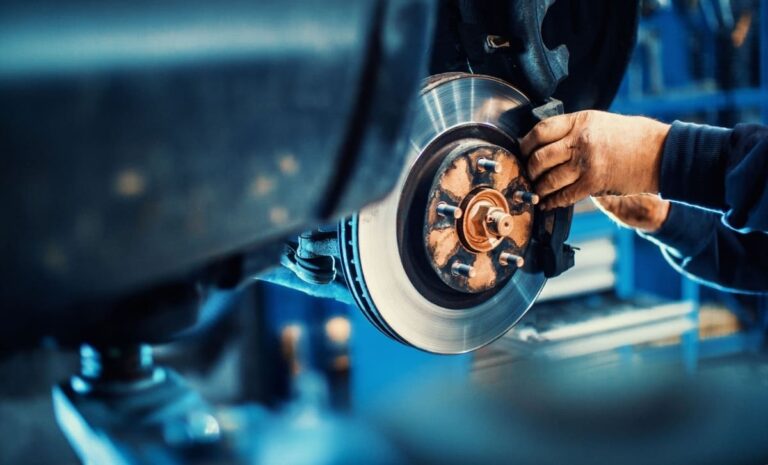Reduced Steering Assist: Causes & Fixes For Safe Driving
Have you ever gotten into your car, started driving, and suddenly saw a warning message pop up about “reduced steering assist”? This alarming message is becoming more common in newer vehicles equipped with advanced driver assistance systems. But what exactly does it mean and what should you do when reduced steering assist activates?
In short, reduced steering assist means your vehicle’s power steering support has been reduced due to a problem detected with sensors or cameras used by steering assist technology. While you can still steer, it will take more effort. To restore normal steering function and continue driving safely, the root cause must be addressed.
This detailed guide will cover everything you need to know about reduced steering assist, including what causes it, the potential dangers, and most importantly – how to properly fix it. We’ll provide troubleshooting tips to get your steering back to normal as quickly and safely as possible. Let’s get started!
Table of Contents
What Is Reduced Steering Assist?
Steering assist technology provides extra power steering support to make it easier for the driver to turn the wheel. Sensors and cameras mounted around the vehicle monitor road conditions and feed data to the power steering system to optimize steering efforts in different scenarios.
Reduced steering assist means this power steering support has been intentionally reduced by the vehicle due to a problem detected with the steering assist system itself.
With reduced steering support, the vehicle will be harder to steer and handle, especially at low speeds. You’ll really need to crank the wheel to make turns. This occurs as a safety precaution – if the camera or sensors have any compromised functionality, the system reduces reliance on them.
Common Causes of Reduced Steering Assist
There are a few common issues that can trigger your vehicle to alert you about reduced steering assist. Here are the most likely culprits:
Dirty or Obstructed Camera/Sensors
The cameras and sensors used by steering assist technology need to have a clear field of view to function properly. If the camera lens or sensor components get dirty from road debris, mud, snow etc, it can impede their capabilities. Obstructions like stickers on the windshield can also block the camera’s line of sight.
Miscalibrated Camera Alignment
The cameras must be precisely calibrated to detect lane markings and objects accurately. If something causes the camera alignment to shift slightly, the steering assist system may not interpret the footage correctly. Even a minor miscalibration can degrade performance.
Software Glitches
Like any complex electronic system, steering assist technology can experience occasional software hiccups. Bugs or errors in the code can lead to the camera or sensors misinterpreting data from the road. When this happens, reduced steering assist kicks in automatically.
Inclement Weather Conditions
Cameras have a hard time seeing lane markings clearly during heavy rain, snow, fog or other weather events that obstruct visibility. The compromised visibility makes it harder for the cameras to orient themselves, causing reduced steering assist activation.
Now that you know what can trigger it, let’s discuss why reduced power steering support can be dangerous if you keep driving the vehicle.
Dangers of Driving With Reduced Steering Assist
Reduced steering assist impacts two primary functions that are crucial for safe driving:
Diminished Steering Ability
The biggest risk is the increased difficulty steering the vehicle. With the power steering assist dialed down, it takes a lot more physical effort to turn the steering wheel. Quick maneuvers or sharp turns become very challenging.
This can make it harder to steer around obstacles, merge into traffic, navigate winding roads and handle other everyday driving tasks – especially at lower speeds when steering is normally very easy. Loss of power steering support significantly impacts control.
Decreased Handling and Stability
Reduced steering assist doesn’t just make steering harder – it also impedes handling and stability. Your vehicle may feel more “loose” and unresponsive in turns. Recovery after hitting bumps or potholes could be diminished too.
This makes the vehicle more prone to loss of control in emergency situations. The compromised handling combined with diminished steering ability drastically increase accident risk.
Clearly, reduced steering assist is not something to ignore. Next we’ll cover some diagnostic tips on how to properly fix it.
How to Fix Reduced Steering Assist?
Don’t keep driving with reduced power steering – that’s a safety hazard. Here are some troubleshooting steps to help resolve the issue promptly:
Clean the Camera and Sensors
The first thing to try is cleaning the camera lens and sensors around the vehicle that are used by the steering assist system. Use a soft cloth and mild glass cleaner to gently wipe them down. Make sure there are no dirt, dust, grime or other debris obstructing the camera or sensors. Also check for anything blocking their field of view like stickers.
Hopefully just cleaning the components will allow everything to function normally again after a restart. Especially if the problem started after driving through inclement weather, a good cleaning may do the trick.
Recalibrate the Steering Assist Camera
If clearing dirt and obstructions doesn’t fix it, the camera alignment may need recalibration by your dealer. Much like wheels, the steering assist camera needs to be “aligned” properly. Over time, vibrations and jostling can shift it out of position.
Recalibration requires specialist tools to configure – a simple cleaning won’t fix misalignment problems. Schedule a service visit so the dealership technicians can properly realign the camera. This should restore normal steering capabilities if a shifted camera was the root cause.
Update Vehicle Software
Your vehicle’s software plays a role in interpreting data from steering assist sensors and cameras. Bugs or glitches in the software code can sometimes occur after major updates. If cleaning the equipment and camera recalibration don’t solve the problem, ask your dealership to check for software updates.
New patches are released constantly to address issues that arise in increasingly complex vehicle software. Getting the latest updates could fix any software-related reduced steering assist activations.
Wait Out Short-Term Weather Conditions
As mentioned earlier, heavy rain, snow, fog and other weather conditions that obstruct visibility can interfere with the camera sensors temporarily. In these cases, simply waiting for the inclement weather to pass may allow normal steering support to come back online.
Pull over to a safe spot if possible. Don’t force the car to drive through hazardous conditions. Waiting out the bad weather is better than risking an accident with reduced steering assist.
Alright, you’ve diagnosed the problem – now it’s fixed and steering is back to normal. But what if reduced steering assist activates again shortly after? Let’s go over some safe driving tips to get you through those situations.
Driving Safely With Reduced Steering Assist
If reduced steering support comes on briefly due to bad weather or a temporary glitch, use caution until it resolves. Here are some ways to drive more safely with reduced steering assist:
- Reduce your speed significantly. Steering issues are amplified at higher speeds. Slow down to give yourself more reaction time.
- Increase your following distance. Leave ample room between your vehicle and others to avoid emergency braking or steering.
- Avoid sharp turns. Stick to wide, gentle turns that require less rapid steering input.
- Apply smooth, gradual steering. Sudden cranking of the wheel will be very difficult.
- Use extra caution merging or changing lanes. Build up speed gradually on highway on-ramps before merging over.
- Watch for other drivers not expecting your slower speed or hesitation to turn. Keep your eyes moving to spot potential hazards early.
- Activate your hazard lights, especially if stopped or moving significantly below the flow of traffic.
- Pull over if you don’t feel safe continuing to your destination. Wait for assistance rather than risk an accident.
Exercising extra caution whenever reduced steering assist activates will help you get through those situations safely. But if it keeps happening regularly, further repairs may be needed.
When to Visit the Dealer for Repairs?
If you’ve tried the troubleshooting tips but reduced steering assist keeps engaging, it’s time to have your vehicle serviced. Here are some signs it’s time for professional attention:
- The issue arises every time you drive, not just occasionally. Persistent problems indicate a deeper system malfunction.
- Steering seems loose or disengaged even when the warning isn’t active. This points to a mechanical issue.
- The steering wheel shakes at highway speeds. This likely means alignment issues are present.
- You recently had front-end repairs that could have affected alignment. Even minor body work can impact alignment.
- Warning lights related to other driver assist systems have come on as well. Failures in multiple systems may share a root cause.
Don’t delay repairs if reduced steering assist happens constantly or steering just feels “off” in general. Make an appointment and explain all your symptoms in detail. The dealership can dig deeper to pinpoint underlying issues. This may involve:
- Inspecting power steering components like the rack, pump, and hoses.
- Verifying proper camera alignment and recalibrating if needed.
- Checking for loose chassis parts that may be interfering with sensors.
- Updating software and reconfiguring settings if necessary.
- Test driving to experience the problem firsthand.
- Ordering replacement parts for any components damaged or excessively worn.
Address these issues promptly so you can get back to easy, responsive steering and enhanced stability. Prioritizing repairs will give you confidence your vehicle can handle any maneuvers or emergencies. Driving with reduced steering assist all the time is never worth the risk.
Conclusion
Reduced steering assist is a serious issue that compromises your ability to control your vehicle safely. While startling when it first appears, understanding the causes can help you diagnosis problems early.
Try the troubleshooting tips outlined here to restore normal steering function as quickly as possible. Clean cameras and sensors, recalibrate alignments, update software, and wait out temporary weather conditions.
Exercise additional caution until steering assist works properly again. But if problems persist, have your vehicle serviced right away to fix underlying issues. Repairing reduced steering assist promptly will give you the confidence of full steering capability when navigating daily driving as well as emergency scenarios.
Don’t ignore this critical warning light – leverage the knowledge provided here to address reduced steering assist events and continue driving with the responsiveness and control we all expect from our vehicles. Your safety on the road depends on it!







